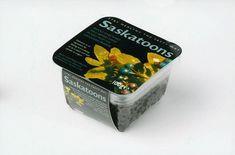

Saskatoon berries have been brought to the UK for the first time by JO Sims.
The berry is from the Canadian prairies and a member of the apple family, although it is the size of a blueberry and has an almond taste.
There will be no fresh imports of the produce this year only dried or frozen. It is on the shelves of Waitrose and is expected to enter Sainsbury’s stores in the near future. National accounts sales manager Jim McKee said: “We have been looking at the saskatoon berry for some time now and we think it has potential in the UK. It has entered supermarkets in a ‘snack to go’ 100g retail pack and is performing exceptionally in Waitrose. It is designed to be eaten as a healthy snack on its own or with yoghurt or cereals. It also can be used in muffins, breads and cheeses”
JO Sims sources its supply of saskatoons from Prairie Lane, a Manitoba grower responsible for 60 per cent of Canada’s saskatoon crop.
McKee also believes that it won’t be too long before the saskatoon can enter the UK as a fresh product. He said: “Maybe this time next year we will see fresh imports. Product volumes are growing rapidly.”
The company sources 1200 of the industry’s 2000 acres producing, processing and freezing three million lbs of berries each year and exports are tipped to rise by 21 per cent in the next 12 months. McKee added: “Next year we are expecting this to rise to 5m and for 2006 this is tipped to rise to 10m, so the saskatoon has a bright future ahead.”
Also known as Juneberries, shadberries or serviceberries, saskatoons have been commercially produced in Canada for just ten years, with the first berries exported to the US and the Netherlands last year. The berry grows on hardy bushes that reach over 15 feet in height and withstand temperatures as low as -40°C. Harvested in July, the berries are carefully sorted to ensure consistency and then kept cool, which is vital to maintain high quality. The product has a shelf-life of two years when stored at -20°C.






No comments yet